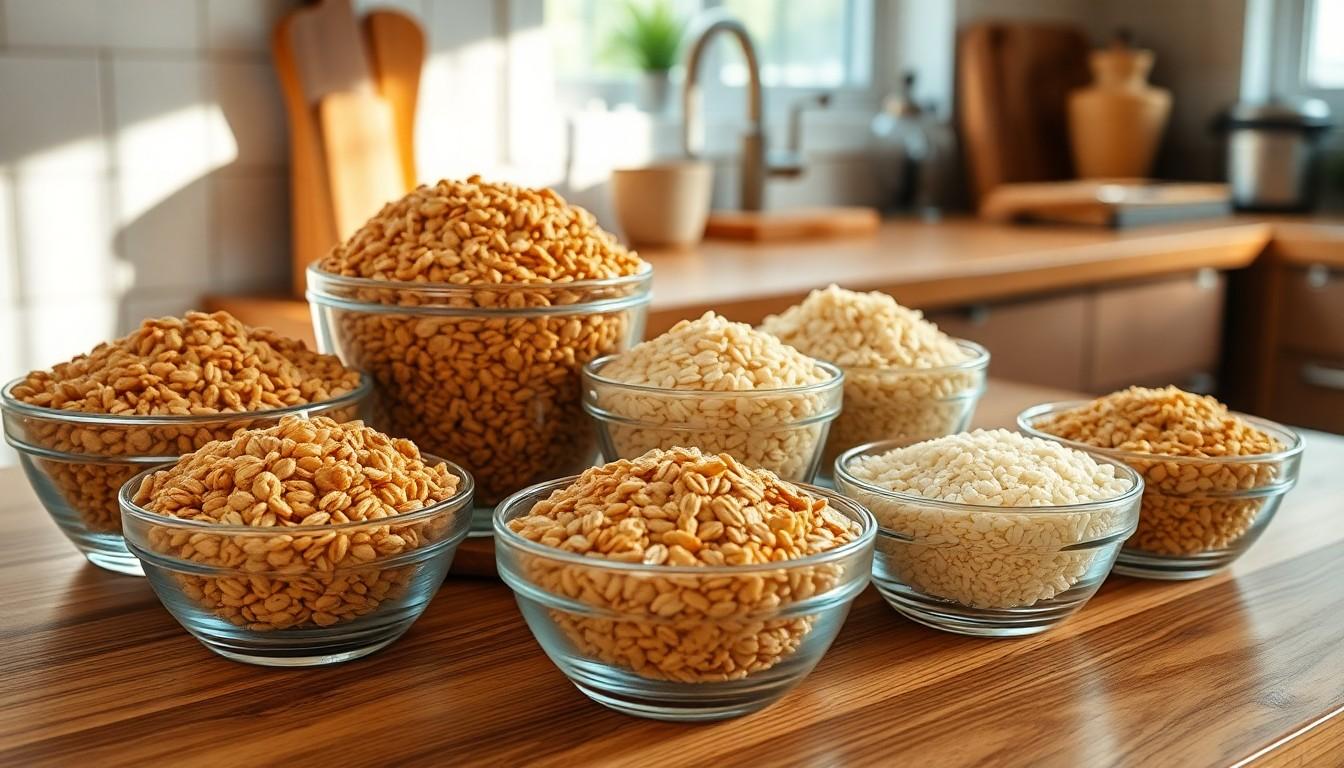Phone:
(701)814-6992
Physical address:
6296 Donnelly Plaza
Ratkeville, Bahamas.

Bran might not be the life of the party, but it sure knows how to steal the show in the kitchen! Packed with fiber and nutrients, this humble ingredient deserves more than just a spot in your cereal bowl. It’s time to unleash its potential and discover the art of cooking with bran.
Bran contains the outer layer of cereal grains like wheat, oats, and rice. It’s rich in dietary fiber, offering multiple health benefits. Fiber promotes digestive health, aids in weight management, and helps stabilize blood sugar levels.
Nutritionists highlight bran’s role in reducing the risk of chronic diseases. Regular consumption may lower cholesterol and improve heart health. Whole grain products that include bran offer essential vitamins and minerals, such as B vitamins and iron.
Incorporating bran into daily meals enhances the nutritional profile of dishes. It can be added to smoothies for extra fiber, mixed into batters for baked goods, or used as a topping for yogurt. This ingredient provides a nutty flavor and satisfying texture, making it versatile.
Bran is not limited to breakfast options. It can easily enhance soups, stews, and salads. Home cooks appreciate this adaptability, as bran enriches flavors and boosts nutritional content across various cuisines.
Storing bran correctly preserves its freshness and nutritional value. Keeping it in a cool, dry place, preferably in an airtight container, extends shelf life. Monitoring moisture exposure is crucial, as it prevents spoilage.
Overall, using bran in cooking offers a simple way to improve health while enjoying delicious meals. With its numerous benefits, bran transforms everyday recipes into nutritious staples.

Bran exists in various forms, each offering unique nutritional benefits and culinary uses.
Wheat bran contains high fiber content, often serving as a key ingredient in breakfast cereals. This type of bran supports digestive health effectively, making it popular among health-conscious individuals. Nutritional studies indicate that wheat bran can help lower cholesterol levels. Many bakers incorporate wheat bran into breads and muffins, enhancing both texture and nutrition. It’s a great choice for adding fiber without altering flavors significantly. For those looking for a fiber boost in their morning routines, wheat bran offers a convenient and versatile option.
Oat bran is rich in beta-glucans, which contribute to lowering cholesterol and improving heart health. Due to its pleasant texture and nutty flavor, oat bran is often included in oatmeal and smoothies. Many consumers use oat bran as a thickening agent in soups and sauces. Its high fiber content promotes fullness, making it a good addition for weight management. Oat bran also pairs well with baked goods like pancakes and bread, enhancing their nutritional profile. Incorporating oat bran into daily meals can support overall wellness.
Rice bran is harvested from the outer layer of brown rice, making it a source of healthy fats and antioxidants. This type of bran contains many vitamins and minerals, beneficial for overall health. Rice bran often appears in snack bars and breakfast cereals, providing a crunchy texture. Many people appreciate its mild flavor, which allows it to blend seamlessly into recipes. It works well in health-focused baked goods and can even serve as a coating for proteins when frying or baking. Including rice bran in meals can boost nutrition effortlessly.
Understanding cooking techniques for bran enhances its incorporation into various meals. Several methods can maximize bran’s nutritional benefits and culinary versatility.
Soaking bran softens its texture, making it more palatable. This technique also reduces cooking time for certain dishes. Rinsing bran under cold water removes excess dust and impurities, ensuring a cleaner ingredient. It’s common to soak wheat and oat bran for 30 minutes to improve digestibility and enhance flavor. Practicing this technique allows home chefs to appreciate bran’s unique qualities.
Cooking bran requires different approaches depending on its type. Whole grain bran can be boiled, while oat bran often adds moisture to baked goods. Adjustments in liquid content may be necessary when using bran in recipes. Baking with bran enhances fiber content in muffins and breads, contributing to a heartier texture. Utilizing bran in pancakes or waffles adds a nutritious twist to breakfast options.
Incorporating bran into recipes promotes health without sacrificing flavor. Smoothies benefit from a scoop of bran, enriching both taste and nutrition. Adding bran to stir-fries or salads provides crunch and boosts dietary fiber. Home cooks often include bran in homemade granola or energy bars for an extra health kick. Enhancing sauces with bran thickens consistency while improving nutritional quality.
Bran can enhance meals when used correctly. Storage plays a crucial role in maintaining its freshness and nutritional benefits.
Store bran in a cool, dry place. An airtight container preserves its quality and prevents moisture absorption. Keep it away from direct sunlight to prolong shelf life. Under optimal conditions, bran typically lasts for several months. Regularly check for any signs of spoilage, such as off smells or changes in texture. Using bran before its expiration date ensures maximum nutrient retention.
Combining bran with other ingredients boosts both flavor and nutrition. Mix bran into smoothies to enhance fiber content and create a satisfying texture. Incorporate it into baked goods, like muffins or pancakes, for added moisture. Stir matches well with oats, creating a hearty breakfast. Adding bran to soups and stews enriches the dish while thickening the consistency. Experimentation fosters creativity in meal preparation, making bran a versatile addition.
Bran’s versatility and nutritional benefits make it an excellent addition to any diet. By incorporating various types of bran into meals, individuals can enhance their fiber intake while enjoying a range of flavors and textures. Whether it’s boosting a smoothie or enriching baked goods, bran offers endless possibilities for creativity in the kitchen.
Proper storage is key to maintaining its freshness and health benefits. With a little experimentation, bran can transform everyday recipes into nutritious options that support overall well-being. Embracing bran not only promotes better health but also elevates culinary experiences, making it a valuable ingredient for anyone looking to improve their meals.